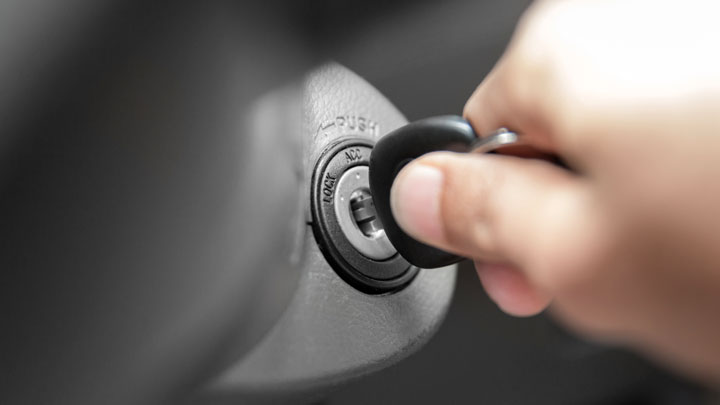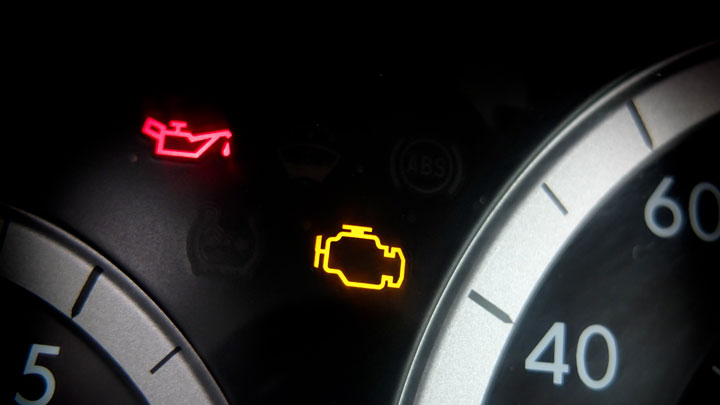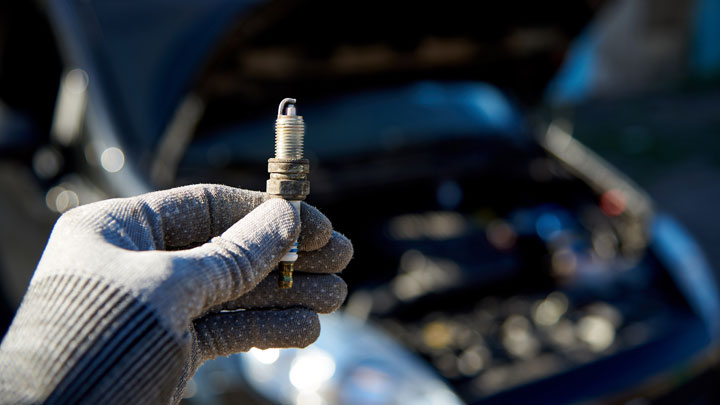Last Updated on June 6, 2022
While it can be a pretty straightforward process to diagnose an engine that’s running rich, accurately diagnosing an engine that’s running lean can be a little trickier. But just because it’s harder to spot the culprit doesn’t make it any less severe.
Failure to address a lean running engine can lead to unrepairable engine damage and cost you a fortune! But what exactly does a mechanic mean when they tell you that your engine is running lean, and what can you do about it? Keep reading, and we’ll break it all down for you.
What Does Running Lean Mean
When a mechanic tells you that your engine is running lean, it means that it’s not getting enough fuel. While you might think that this is fine because it’ll save you a little money at the pump, an engine running too lean is a severe condition you need to address immediately.
If your engine isn’t getting enough fuel, you’ll notice some performance issues, but the bigger problem you have to worry about is potentially blowing up your engine.
Without the proper fuel to air ratio, your engine gets taxed much further which cycle of the engine – and it’s only a matter of time before this added taxation leads to a big problem.
Car Running Lean Symptoms
But how can you tell if your car is running lean? Chances are if something is amiss, you’ll notice, but there are some things that you should keep an eye out for so you don’t end up with a damaged engine!
#1 – Low Power Output and Poor Performance

Even if you can get your vehicle started, if the engine is running lean, you’ll notice a drop in performance and power. That’s because maximizing your vehicle’s performance is about more than adding a random amount of fuel.
The fuel injectors need to squirt the right amount of fuel into the cylinder with each cycle to ensure maximum power and efficiency. If your vehicle’s engine is running lean, you’ll notice that it won’t be able to accelerate as effectively as it did before. You’ll probably notice some issues with its responsiveness.
The reason for this is pretty straightforward. Whether you’re driving a diesel or gas-powered vehicle, the explosion of fuel generates the necessary force to drive the piston back up. The force of the explosion drives the piston up and generates the power to keep your engine running.
Without enough fuel, the explosion is smaller, leading to the piston being forced back up at a slower speed.
#2 – Trouble Getting Your Car Started

Your vehicle’s engine needs fuel to run. Without it, you won’t be going anywhere. That’s why a common symptom of an engine that’s “running” lean is that you won’t be able to get it to run at all!
Related: Causes of a Car That Cranks But Won’t Start
#3 – Clean or White Spark Plugs

When everything is working as it should, things get dirty. If you pull out one of your spark plugs and it’s white or looks brand new, you have a problem. Normally, you’d associate dirty spark plugs with faulty spark plugs but that’s not automatically the case.
The fuel should be burning, and that burning should leave some residue on your spark plugs. The older your spark plug, the more residue should be there.
Related: How to Replace Spark Plugs (Step-by-Step)
#4 – Check Engine Light Is On

Manufacturers load up modern engines with sensors. As soon as they sense something amok, they send a signal to the ECU, and the ECU lights up your check engine light to let you know something is wrong.
It probably won’t say that it’s running lean, but instead, it will give you a better indication of what’s causing the problem.
Maybe you’ll have a check engine light for low fuel pressure or a faulty O2 sensor. Either way, your check engine light will point you in the right direction!
#5 – Stalling Engine

Even if you manage to get your vehicle started, it’s running lean you might have problems keeping it running. It’ll sound awful and will sputter until it can’t keep going. This will be especially true as you idle.
When you’re dumping more fuel into the system by stepping on the accelerator, it’s a little easier to keep running. However, you still won’t get the power output you need.
Related: 8 Common Causes of an Engine Stalling
Common Causes of a Car Running Lean
While identifying that your engine is running lean is a critical step, it’s just as essential to determine the cause. While there are tons of problems that can lead to an engine running lean, some are far more common than others.
Below are some of the most common causes and how you fix them yourself!
#1 – Clogged Fuel Filter
Your fuel filter does all the dirty work – literally. The filter cleans out all the dirt, grime, gunk, and everything else that gets into your fuel tank. As the filter gets used, this gunk starts to build up, affecting how much fuel gets through.
While the filter element lets fuel through without any problems, the junk that it’s keeping out stays there, and your fuel can’t get through that. This is one of the most significant reasons that you need to change your fuel filter regularly.
#2 – Clogged Fuel Injectors
Another reason that you should be changing your fuel filter regularly is to protect your fuel injectors. Unlike fuel filters, which can handle a ton of foreign gunk, fuel injectors are finicky beasts. Even a little bit of dirt or grime can render them useless.
Once they’re clogged, they’ll struggle to get enough fuel into the combustion chamber. If this happens, you’ll need to get your injectors cleaned, and if you’re unlucky, you’ll need to replace them.
While it’s relatively cheap to clean your injectors, replacing them is pretty expensive.
#3 – Faulty Fuel Pump
If your engine is running lean, it’s because not enough fuel is getting into the combustion chamber. Getting the fuel into the combustion chamber all starts at the fuel pump. If it’s clogged or simply isn’t able to pull enough fuel out of the tank anymore, the final result will be low fuel pressure and an engine that runs lean.
Unfortunately, replacing your fuel pump is neither cheap nor easy if you don’t have the proper equipment. While it’s a common reason for an engine to run lean, it’s not the one you’re hoping for as it usually will end up costing you between 400 and 600 dollars to replace.
#4 Faulty Oxygen Sensor
Because modern vehicles have a large number of outputs controlled by sensors throughout the vehicle, one of the most common reasons for an engine to run lean is because you have a faulty oxygen sensor or air-fuel sensor.
Your vehicle’s ECU uses inputs from the oxygen sensors to determine how much fuel to add to each cycle. If the oxygen sensor is faulty and is falsely reading excessive emissions, then it’s telling your ECU to send less fuel into the combustion chamber!
No matter how little fuel it sends, it’s always reading excessive emissions because the sensor is faulty.
The good news is that replacing your oxygen sensors is often easy enough for the average person to do. If your engine is running, this is the problem you’re hoping to have.





I’ve read some interesting and beneficial things here about motors. Will it hurt my 94 ford f150 5.8L 351W motor if I connect the small hose that was once clamped to the throttle body to the small hose that was clamped to the copper or metal line underneath the throttle body. Apparently the hoses had never been removed from the metal lines before I bought this truck. I discovered that both the top and bottom metal lines were rusted when I removed those small rubber hoses from throttle body to clean the the TB. From what I’ve read, correct me if I’m wrong, it should not hurt my vehicle my truck if I connect both of the small hoses together because the bottom hose was connected to the input line whereas the top metal line was the output line which goes back to the radiator, right?
Is the small hose a vacuum line or a coolant hose? If it’s a coolant hose it’s probably running to your idle air control valve (near the throttle body). Disconnecting the IAC hose may mess with your idle smoothness.
If you live in a cold climate, the throttle plate can freeze without coolant running to it.